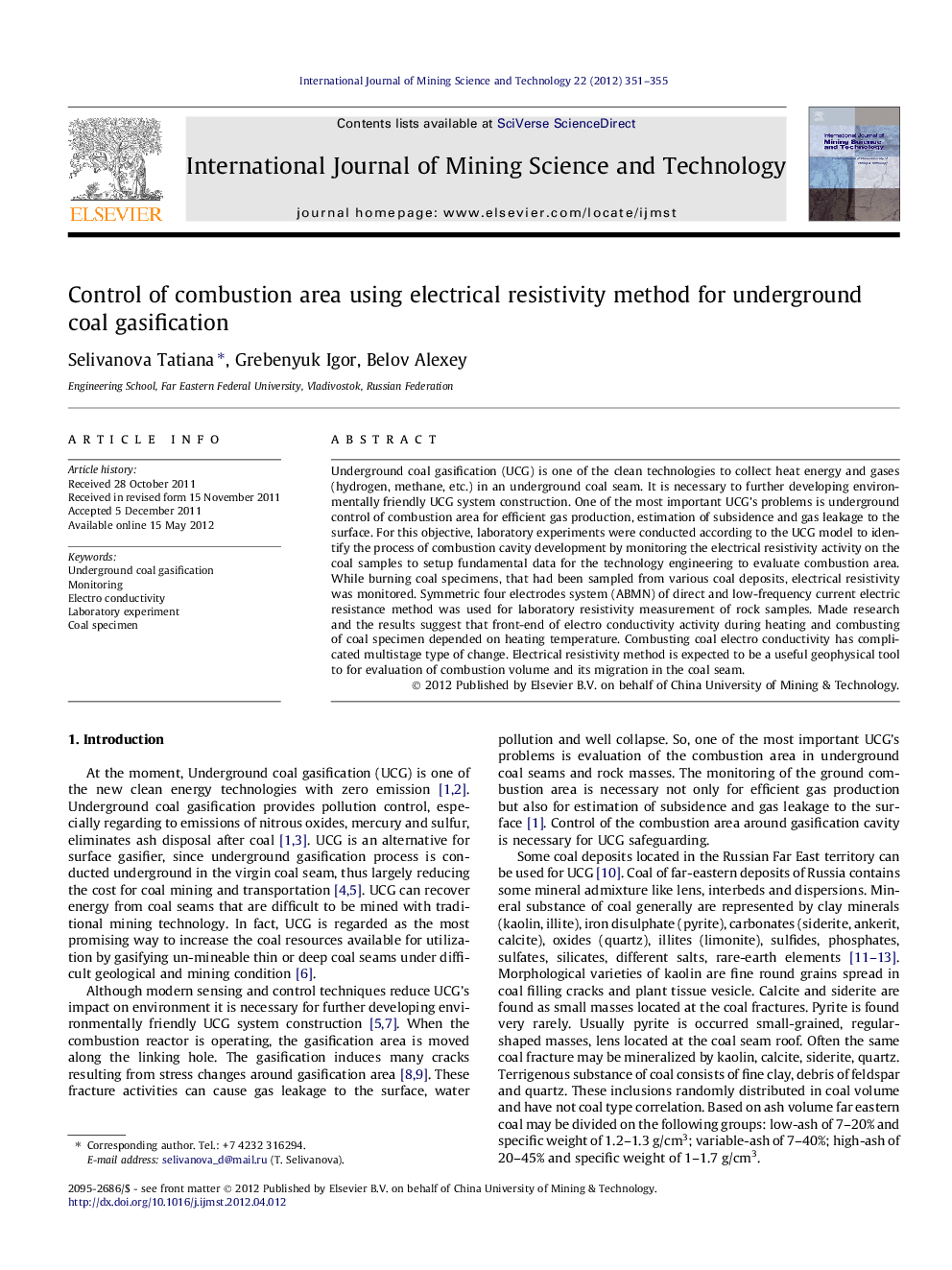| Article ID | Journal | Published Year | Pages | File Type |
|---|---|---|---|---|
| 276281 | International Journal of Mining Science and Technology | 2012 | 5 Pages |
Underground coal gasification (UCG) is one of the clean technologies to collect heat energy and gases (hydrogen, methane, etc.) in an underground coal seam. It is necessary to further developing environmentally friendly UCG system construction. One of the most important UCG’s problems is underground control of combustion area for efficient gas production, estimation of subsidence and gas leakage to the surface. For this objective, laboratory experiments were conducted according to the UCG model to identify the process of combustion cavity development by monitoring the electrical resistivity activity on the coal samples to setup fundamental data for the technology engineering to evaluate combustion area. While burning coal specimens, that had been sampled from various coal deposits, electrical resistivity was monitored. Symmetric four electrodes system (ABMN) of direct and low-frequency current electric resistance method was used for laboratory resistivity measurement of rock samples. Made research and the results suggest that front-end of electro conductivity activity during heating and combusting of coal specimen depended on heating temperature. Combusting coal electro conductivity has complicated multistage type of change. Electrical resistivity method is expected to be a useful geophysical tool to for evaluation of combustion volume and its migration in the coal seam.
